Fernão Mendes Pinto
| Fernão Mendes Pinto | |
|---|---|
.png) Possible likeness of Fernão Mendes Pinto in the Visitation altarpiece (Giraldo Fernandes de Prado, 1589-91) of the Church of Misericórdia of Almada, Portugal | |
| Born |
1509 Montemor-o-Velho, Kingdom of Portugal |
| Died |
8 July 1583 Pragal, Almada, Kingdom of Portugal |
| Nationality | Portuguese |
| Occupation | explorer and writer |
| Known for | Pilgrimage |
Fernão Mendes Pinto (Portuguese pronunciation: [fɨɾˈnɐ̃w̃ ˈmẽdɨʃ ˈpĩtu]; c.1509 – 8 July 1583) was a Portuguese explorer and writer. His voyages are recorded in Pilgrimage (Portuguese: Peregrinação) (1614), his autobiographical memoir. The historical accuracy of the work is debatable due to the many events which seem far fetched or at least exaggerated, earning him the nickname "Fernão Mentes Minto" (wordplay with the Portuguese verb mentir 'lie', meaning "Fernão, are you lying? I am lying."). Some aspects of the work can be verified, particularly through Pinto's service to the Portuguese Crown and by his association with Jesuit missionaries.
Early life
Fernão Mendes Pinto was born in about 1509, in Montemor-o-Velho, Portugal to a poor rural family (or perhaps to a family of minor nobility who had fallen on hard times). Pinto had two brothers and two sisters (and possibly other siblings). In 1551, a brother, Álvaro, was recorded in Portuguese Malacca. Letters also record the martyr's death of a brother in Malacca. In 1557, Francisco Garcia de Vargas, Pinto's wealthy cousin is recorded at Cochin.
Pinto described his childhood as spartan. In 1521, hoping to improve the boy's prospects, an uncle took him to Lisbon. There, Pinto was employed in the household service of a noblewoman. After eighteen months or so, Pinto fled. At the docks, he was hired as a ship's boy on a cargo vessel bound for Setúbal. On the way, French pirates captured the ship and the passengers were set upon the shore at Alentejo.
There is a claim that he might have been related to the wealthy Mendes family who were descendants of Jewish Marranos who lived in Portugal (which makes him a relative of Gracia Mendes Nasi).[1] They had a monopoly of the black pepper commerce in Portugal and some of them later moved to Antwerp in Belgium
Pinto made his way to Setúbal, where he entered the service of Francisco de Faria, a knight of Santiago. He remained there for four years and then joined the service of Jorge de Lencastre, a master of the Order of Santiago (also an illegitimate son of King John II of Portugal). Pinto held that position for a number of years. Although comfortable, it held no promise of advancement. Therefore, at twenty-eight, Pinto left to join the Portuguese India Armadas.
Voyages
Pinto's travels can be divided into three phases: firstly, from Portugal to India; secondly, through the region of the Red Sea, from the coast of Africa to the Persian Gulf; and thirdly, from east India to Sumatra, Siam, China, and Japan. Finally, Pinto returned to Europe.
First voyage to India
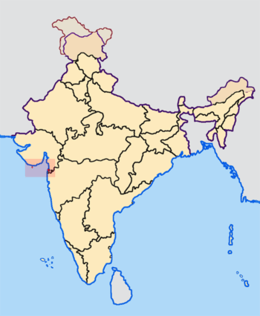
On 11 March 1537, Pinto left Lisbon for India via Portuguese Mozambique. On 5 September that year, he arrived in Diu, a fortified island and town northwest of Bombay (Portuguese since 1535 but under siege by Suleiman the Magnificent).
Pinto joined a Portuguese reconnaissance mission to the Red Sea via Ethiopia. The mission was to deliver a message to Portuguese soldiers guarding Eleni of Ethiopia, the mother of "Prester John" (Emperor Dawit II of Ethiopia) in a mountain fortress. After leaving Massawa, the mission engaged three Turkish galleys. The Portuguese ships were defeated and their crews taken to Mocha to be sold as slaves.
Pinto was sold to a Greek Muslim who was a cruel master. Pinto threatened suicide and was sold to a Jewish merchant for about thirty ducats' worth of dates. With the Jewish merchant, Pinto travelled the caravan route to Hormuz, a leading market town in the Persian Gulf. There, Pinto was freed by way of payment of three hundred ducats from the Portuguese crown. He was made captain of the Fortress of Hormuz and the Portuguese king's special magistrate for Indian affairs.
Second voyage to India
Soon after being freed, Pinto sailed on a Portuguese cargo ship to Goa. Against his will, Pinto was transferred en route to a naval fleet bound for the Sindhi port city of Debal near Thatta. After enduring battles with Ottoman ships, Pinto reached Goa.
Malacca and the Far East

From 1539, Pinto remained in Malacca under Pedro de Faria, the newly appointed captain of Malacca. Pinto was sent to establish diplomatic contacts, particularly with small kingdoms allied with the Portuguese against the Muslims of northern Sumatra. In 1569, he discovered an Ottoman fleet led by Kurtoğlu Hızır Reis in Aceh.
Patani
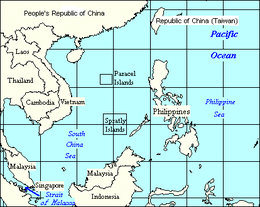
Following Pinto's mission to Sumatra, he was sent to Patani, on the eastern shore of the Malay peninsula. From there, Pinto made an unsuccessful delivery of merchandise to Siam. The goods were stolen by pirates who were then chased by Pinto and António de Faria. Pinto continued trading operations in the South China Sea, especially in the Gulf of Tonkin.
China
Pinto entered China from the Yellow Sea and raided a tomb of the Emperor of China. Pinto was shipwrecked, apprehended by the Chinese and sentenced to one year hard labour on the Great Wall of China. Before completing his sentence, Pinto was taken prisoner by invading Tatars. He became an agent of the Tartars and travelled with them to Cochinchina, the southernmost part of modern-day Cambodia and Vietnam. Pinto describes his encounter with a "pope-like" man, possibly the Dalai Lama, who had never heard of Europe. Pinto and two companions jumped ship to a Chinese pirate junk and were shipwrecked onto the Japanese island of Tanegashima, south of Kyūshū. Pinto later claimed to be the first westerner to enter Japan.
Japan
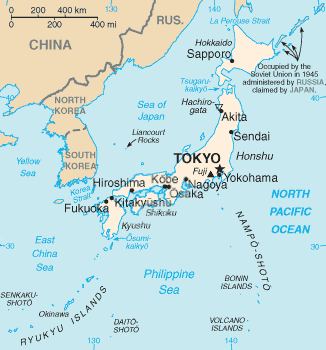
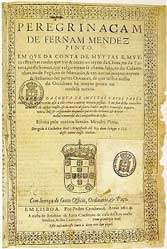


In 1543, Pinto introduced the arquebus to Japan. The firearm was reproduced and used in the Japanese civil wars. It was known as the tanegashima.
Pinto facilitated trade between the Portuguese and Japan. At one point, he was shipwrecked on the Ryukyu Islands. In 1549, Pinto left Kagoshima accompanied by a Japanese fugitive, Anjirō. He returned to Japan with Saint Francis Xavier, a Catholic missionary. In 1554, Pinto joined the Society of Jesus and donated a large sum of his trading wealth to the mission. In a letter, Ōtomo Yoshishige, daimyō of Bungo, offered his conversion and requested Pinto return to Japan. The letter arrived at the same time that Xavier's body was being displayed in Goa. Ōtomo did not convert at that time due to internal difficulties but did so later at the time Pinto was completing his autobiography. Between 1554 and 1556, Pinto returned to Japan with Xavier's successor. He became the Viceroy of Portuguese India's ambassador to the daimyo of Bungo on the island of Kyūshū. Despite Pinto's support of the Church in Japan, he left the Jesuits in 1557.
Martaban
Pinto returned to Malacca and was then sent to Martaban. He arrived in the midst of a siege and took refuge in a Portuguese camp of mercenaries who had betrayed the Viceroy. Pinto similarly was betrayed by a mercenary, captured by the Burmese and placed under the charge of the king's treasurer who took him to the kingdom of Calaminham. Pinto fled to Goa.
Java
On Pinto's return to Goa, Faria sent him to Bantam, Java, to buy pepper for sale to China. Once again, Pinto was shipwrecked. He may have resorted to cannibalism before submitting to slavery in order to secure passage out of the swampy Java shore. Pinto was bought by a Celebes merchant and resold to the King of Kalapa who returned him to Sunda.
Siam
Using borrowed money, Pinto bought passage to Siam where he encountered the King of Siam at war. Pinto's writings contribute to the historical record of the war.
Return to Portugal
On 22 September 1558, Pinto returned to Portugal. Fame preceded him in Western Europe due to one of his letters being published by the Society of Jesus in 1555. Pinto spent the years 1562 - 1566 in court looking for reward or compensation for his years of service to the Crown. He married Maria Correia Barreto with whom he had at least two daughters. In 1562, he purchased a farm in Pragal. Pinto died on 8 July 1583 at his farm.
Peregrinação
Pinto began his memoirs in 1569. The book was published posthumously by friar Belchior Faria in 1614. The full title of the book was,
- "Pilgrimage of Fernam Mendez Pinto in which is told the many and very strange things he saw and heard in the kingdom of China, in the one of Tartary, in the one of Sornau, usually called Siam, in the one of Calaminhan, in the one of Pegù, in the one of Martauão, and in many other kingdoms and lordships of the Oriental parts, and that in our Occident there are few or no accounts. And also the account of many particular affairs that occurred both to him and many other people. And in the end of it briefly regards some things, & the death of the Holy Priest Francis Xavier, sole light and brightness of those parts of the Orient, and universal ruler of the Society of Jesus in those parts."
In Old Portuguese,
- "Peregrinaçam de Fernam Mendez Pinto em que da conta de muytas e muyto estranhas cousas que vio & ouvio no reyno da China, no da Tartaria, no de Sornau, que vulgarmente se chama de Sião, no de Calaminhan, no do Pegù, no de Martauão, & em outros muytos reynos & senhorios das partes Orientais, de que nestas nossas do Occidente ha muyto pouca ou nenhua noticia. E tambem da conta de muytos casos particulares que acontecerão assi a elle como a outras muytas pessoas. E no fim della trata brevemente de alguas cousas, & da morte do Santo Padre Francisco Xavier, unica luz and resplandor daquellas partes do Oriente, & reitor nellas universal da Companhia de Iesus."
Although Pinto did not have the education of contemporary authors and did not reveal a knowledge of either classical culture nor aesthetics of the Renaissance, his experiential knowledge and intelligence enabled him to create a meaningful work. Pinto was critical of Portuguese colonialism in the Far East.[2]
The vivid tales of his wanderings were so incredible and far-fetched as to not be believed.[3] They gave rise to the saying "Fernão, Mentes? Minto!", a Portuguese pun on his name meaning "Fernão, do you lie? I do!".[4]
The publication may vary from Pinto's manuscript (some sentences are erased and others are edited). The disappearance of references to the Society of Jesus, one of the most active religious orders in the Orient, is notable, as there are clear indications of Pinto's relationship with the society. Pinto's memoirs are just that, his memories of events, giving rise to doubts regarding historical accuracy. However, it documents the impact of the Asian civilizations on the Europeans and is a reasonable analysis of Portuguese action in the Orient (in comparison to Luís de Camões' Os Lusíadas).
The most controversial of Pinto's claims is his being the first European to visit Japan and his introduction of the arquebus to Japan, Pinto may well have been among the first Europeans in Japan. Another controversial claim, that he fought in Java against the Muslims, has been analyzed by historians. The Dutch historian, P. A. Tiele, who wrote in 1880, did not believe Pinto was present during the campaign, but rather that he wrote his information from secondhand sources. Even so, Tiele admits Pinto's account cannot be disregarded because of the lack of alternative information about Javanese history during the time. Maurice Collis holds the opinion that Pinto's accounts, while not entirely true, remain compatible with historical events. Collis considers Pinto's work the most complete European account of 16th century Asian history.
Legacy
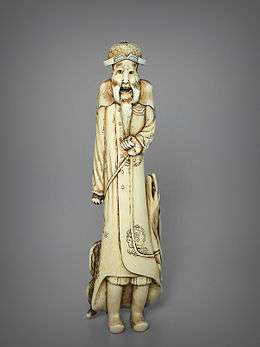
In the 1800s, the carver, Yomeisay, created a netsuke (miniature) of Pinto. He is accompanied by a mythological beast that can only be tamed by magic. Fernão Mendes is shown with unusual fluffy whiskers and beard like the wings spread on his chest. European facial features include a long nose, round eyes, textured cheekbones, high forehead and pear-shaped skull. He is depicted as tall, round-shouldered and thin in a naturalistic way. His long frock shows European buttons.
In 1978, a crater on Mercury was named Mendes Pinto after Pinto.[5]
A high school in Almada, Portugal, built in 1965, was named in his honour and in 2011, a 2 euro coin was issued to mark the 500th birthday of Fernão Mendes Pinto.
See also
References
- ↑ Rebecca D. Catz page xxxvii
- ↑ Catz R. "Fernão Mendes Pinto and His Peregrinação." Hispania magazine, Biblioteca Virtual Miguel de Cervantes
- ↑ Lidin O. "Tanegashima: the arrival of Europe in Japan." Routledge, 2003. p13 ISBN 1135788715, 9781135788711.
- ↑ "The Travels of Mendes Pinto: Team Game." The Inside Scoop on Gaming, RPGnet
- ↑ "Craters: Mendes Pinto on Mercury", Planetary Names: Crater
Sources
- Breve História da Literatura Portuguesa, Texto Editora, Lisboa, 1999
- A. J. Barreiros, História da Literatura Portuguesa, Editora Pax, eleventh edition.
- A. J. Saraiva, O. Lopes, História da Literatura Portuguesa, Porto Editora, twelfth edition.
- Enciclopédia Luso-Brasileira de Cultura, Editorial Verbo, Lisboa, Fifteenth edition.
- Lexicoteca – Moderna Enciclopédia Universal volume 15 Círculo de Leitores, 1987
- The Travels of Mendes Pinto, Edited and translated by Rebecca D. Catz, The University of Chicago Press, ISBN 0-226-66951-3
- Collis, M. The Grand Peregrination Faber and Faber 1949 ISBN 0-85635-850-9
- Fernão Mendes Pinto and the Peregrinação – studies, restored Portuguese text, notes and indexes, directed by Jorge Santos Alves, Fundação Oriente, Lisbon, 2010, ISBN 978-972-785-096-9
Online
Rebecca Catz. "Hispania". Fernão Mendes Pinto and His Peregrinação.
External links
- Works by or about Fernão Mendes Pinto at Internet Archive
- Catz R. "Hispania" Virtual Cervantes website. Accessed 30 August 2005.
- from the Catholic Encyclopedia
- Hispania – American Association of Teachers of Spanish and Portuguese, Inc.
- "The voyages and adventures of Ferdinand Mendez Pinto.1692." English Translation by Henry Cogan, of Nichibunken database
- Boris Filatov's Private Collection of Netsuke